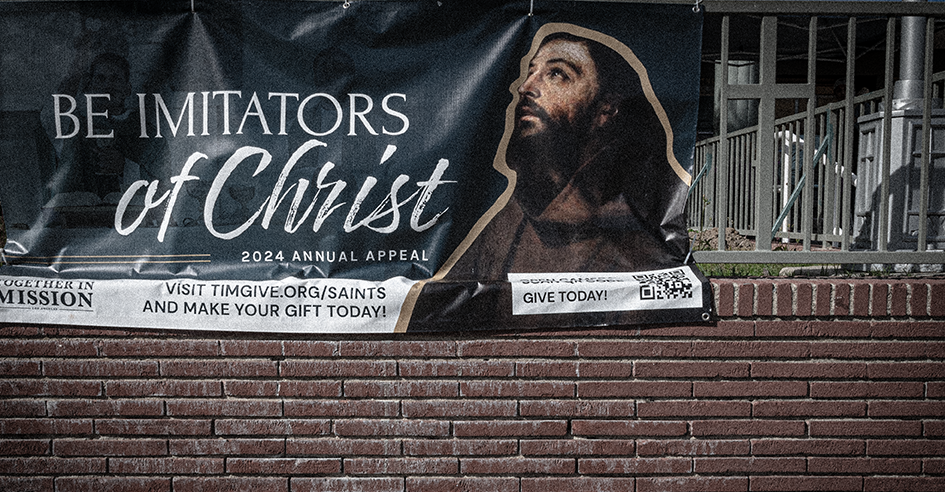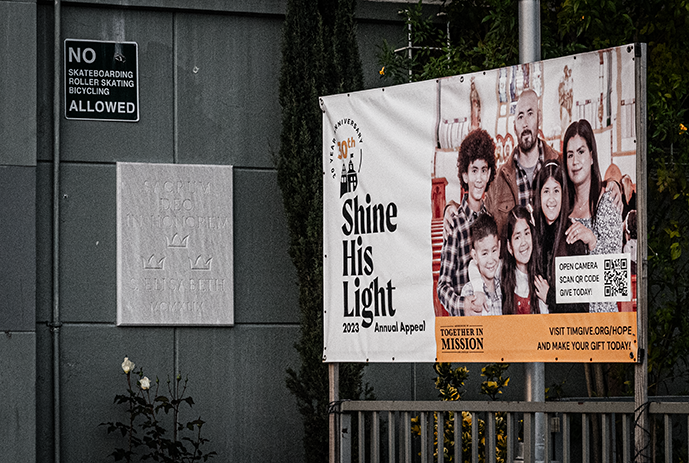Have you ever strolled through a cityscape and noticed seemingly innocuous features of the urban landscape–a bench adorned with armrests, a ledge bristling with spikes or a conspicuous absence of seating in certain areas?
Often overlooked by the casual observer, these elements aren’t merely incidental; they are deliberate manifestations of what is known as hostile architecture.
Hostile architecture, also known as defensive architecture or architectural exclusion, is a design technique employed in urban environments to guide, discourage or outright exclude certain behaviors or individuals.
The term “built environment” is used to refer to surroundings created by humans to be used for human activity. This would include cities, highways, parks and more.
Often used to prevent property damage, the implementation of barriers, fences or walls limit specific uses of public spaces to avert skateboarding, vandalism, loitering or homelessness.
Nonetheless, hostile architecture sparks controversy and criticism for its exclusionary and discriminatory nature with accounts dedicated to acknowledging and discussing defensive architecture on a subreddit.
Historically, architectural exclusion has been used to prevent poor people and people of color from accessing particular locations through the means of adding highways, fences and walls to separate white affluent neighborhoods from colored and poor neighborhoods.
A famous practitioner of this was Robert Moses, a U.S. municipal officer and an American urban planner, most recognized for re-designing the New York metropolitan area from the 1930s to 1960s.
In Robert Caro’s book “The Power Broker,” he recounts Moses despising the idea of poor people “lowering the tone” at Jones Beach and intentionally constructed low-hanging overpasses over parkways in Long Island to prevent buses from traveling there, leaving access only for cars.
The perpetration of this design targeted people of color and poor individuals that relied on public transportation, barring them from accessing the public beach.
Another example of intentional architectural exclusion would be the “Eight-Mile Wall” in Detroit, which was established by a housing developer intending to segregate a predominantly black community from a then newly-established white neighborhood.
Despite it being constructed in the spring of 1941, the six-foot wall continues to stand today, serving as a reminder of racist policies throughout American history.
The most common forms of hostile architecture found in urban landscapes include anti-homeless measures, anti-skateboarding measures and anti-loitering measures.
Originally enacted in 1963 as an anti-loitering law, Section 41.18 has evolved overtime to criminalize homelessness in L.A. by making it illegal to sit, lie down, sleep or store possessions in the “public right-of-way”.
The “public right-of-way” can vary from something menial as two feet from a fire hydrant to 1000 feet from a posted signage.
At the end of 2023, there were more than 73,000 homeless individuals in L.A. County and over 100,000 thousand homeless people in the state of California, reigning the title as the state with the largest homeless population, representing 27.89 percent of the homeless population nationwide.
In a 2023 survey conducted by Payroll.com, they discovered that 78 percent of Americans live paycheck to paycheck. Homelessness in the U.S. is on the rise, increasing by 12 percent in the last year, according to the U.S. Department of Housing and Urban Development.
When examining shelters for homeless individuals and its effectiveness, it might not be as beneficial as it’s been made out to be.
After becoming Mayor of Los Angeles in 2022, Karen Bass proposed her solution to relieve the homelessness crisis in L.A: the Inside Safe Program.
The program would send outreach workers to offer those staying at encampments to stay at a hotel, where they would try to find immediate and permanent housing for unhoused individuals.
According to calmatters.org, the Inside Safe program has succeeded in providing a temporary shelter for vulnerable residents; however after seven months, the program has moved very few individuals from hotels into permanent homes.
Apart from anti-homeless measures, hostile architecture also targets adolescents and youth through anti-skateboarding and anti-loitering measures.
A type of symbolic violence, anti-loitering measures often target behaviors associated with youth congregating in public spaces, such as sitting or standing in groups.
Through the implementation of hostile architecture to discourage loitering, it can criminalize innocent behavior and unjustly target youth for spending time in public spaces, contributing to feelings of alienation and distrust between adolescents and authorities.
American children spend 35 percent less time outside in contrast to their parents, according to a survey conducted by researchers, featured on Business Wire.
Public spaces play a crucial role in fostering social connections among adolescents and youth.
High schools typically provide students with the ability to socialize with their friends.
Van Nuys High School, notorious for its open and green campus, is a great example of a healthy and welcoming public space for adolescents and adults.
However outside of school, location options for adolescents are limited.
Last fall, two churches located outside of the school added fences to prevent students from occupying space in their yards. Despite each church being a private property, it illustrates how adolescents aren’t welcome or tolerated in occupying spaces.
When public spaces are designed with hostile architecture to discourage loitering, it can disrupt natural socialization patterns and make it difficult for adolescents to gather and interact with others.
Consequently causing negative implications for social development and community cohesion for youth.
When young people encounter barriers or deterrents in public spaces, it can contribute to feelings of marginalization and alienation, potentially leading to decreased feelings of belonging and increased stress or anxiety levels.
Per MentalHelp.net, a deficiency of social skills can lead to difficulties in forming relationships with others, isolation and challenges with public speaking in both academic and professional environments.
Reestablishing the idea that adolescents need to socialize in public spaces and that hostile architecture prevents them from doing so.
Addressing hostile and exclusionary architecture requires more than just superficial design solutions; it demands a fundamental shift in our approach to urban planning – one that prioritizes empathy, inclusivity and the well-being of all members of society, regardless of race or economical background.
Only by challenging the status quo and advocating for truly equitable and welcoming urban environments can we begin to dismantle the pervasive legacy of hostile architecture and establish cities that are truly for all.





